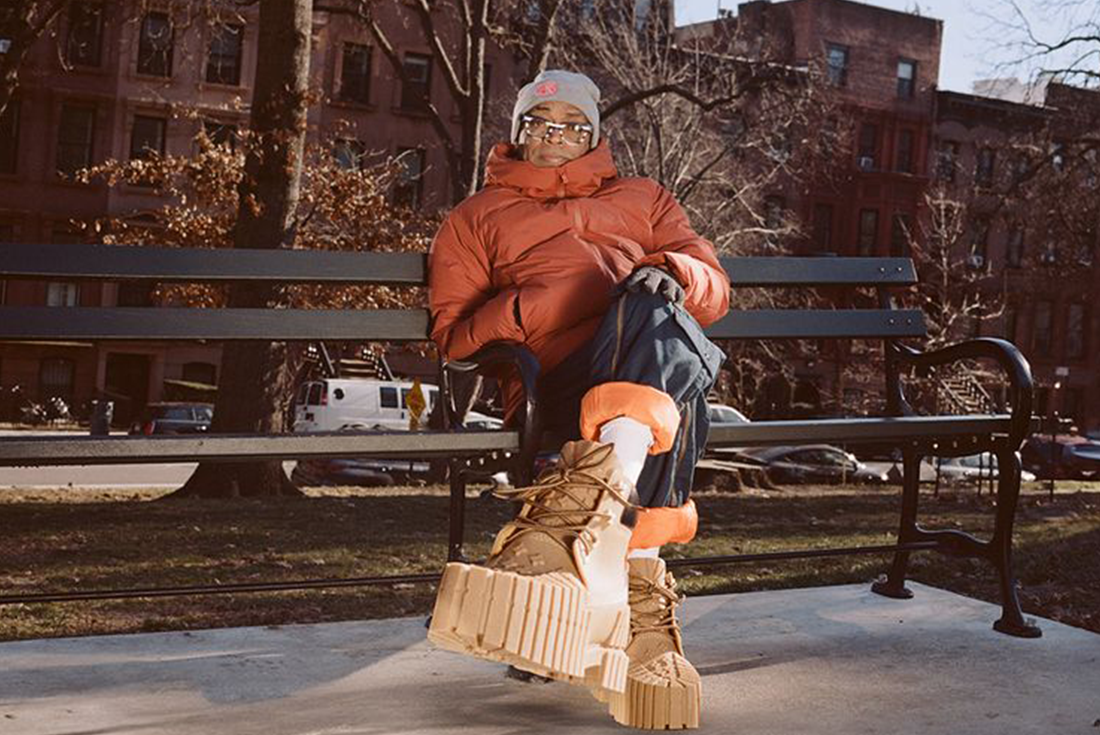Real Talk: The Mischief Isn’t Over, But I Have the Gimmick Shoe Ick
From Tomm¥ Ca$h’s abnormally long Superstars to Comme des Garçons’ Premier Heels, brands are not averse to dropping something crazy when they need to drum up some extra attention. While vying for social shares in this way is not new, nothing seemed to rattle the sneakersphere (and the rest of the internet) quite as much as ’s Big Red Boots. It spurred a whole new generation of gimmicky releases, but the thing about novelty is that it almost always wears off, and it’s fair to say that I have well and truly developed the gimmick ick.
Last February, the Astroboy-inspired style stomped onto our screens for the very first time, causing a stir on social media and spanning a reach far beyond the footwear scene. What’s worse, their entry seemed to usher in a new era of kicks, and instead of the odd gimmick here and there, there were a good few months where gimmicky silhouettes reigned supreme. For the next 12 months, brands were battling it out to win the silly-billy awards, and although I’d been praying that the somewhat stagnant scene would start to come through with more innovation soon, I began to regret what I’d wished for. Imran Potato dropped his – a pair of rubber life-like, hollowed-out rats that came complete with tails at the heel, and Drake threatened to release a Nocta scuba-diving flipper. Not to be outdone, Kerwin Frost released his Grimace slides, and over in the high fashion world, Loewe released sneakers covered in plastic grass. When these gimmicky shoes go mega-viral, it undermines our whole industry and shines a particularly blinding light on hype culture.
Although this started with MSCHF’s Big Red Boot, it wasn’t their intention to create a gimmick craze. The brand’s mission (as they explained in Sneaker Freaker ) is to provide a critique of capitalism, and the boots existed to comment on the hype machine – they were a project that demonstrated how easy it is to leak a product, generate buzz, sell it out, and watch it go for more at resale, all within only 10 days. MSCHF ensured there was no time to question the product's longevity or how quickly the hype would be over – all that was clear was that if you wanted to be in on it, you had to act fast. And it all played into MSCHF’s hands – the mass hysteria surrounding the boots reflected everything that was wrong with hype culture: buying into products you’re told are cool or exciting to show off on social media.
Don’t get me wrong here – I’m all for the critique. I feel strongly about the damage that hype culture has done to the industry, and watching badly dressed ballers and social media stars blindly buy into the product that was created to poke fun at their shopping habits was somewhat satisfying – they could not have missed the point more. However, I would also argue that we didn’t need multiple variations of the same model when the point had already been made. Unless of course that was MSCHF’s way of commenting on how brands are upping their quantities and lazily flooding the market (see: Nike Dunks, adidas Sambas). If this was actually the case, then you know what – fair play.
However, we’re now a few months into 2024 and it seems the gimmicks still haven’t stopped. Already this year we’ve had Off-White’s Baller basketball sneaker (bad), MSCHF’s (gimmick), Alexander McQueen’s horse feet heels (why?), and ASICS collaborated with Airie on a sneaker that was designed to be (gimmicky execution, but a cool art piece). However, none of them really graced our feeds for any longer than 24 hours, and none of them had much meaning behind them, which further stresses my point: let's move on to fixing the hype culture rather than continuing to feed it. As the scene continues to struggle with a lack of innovative product, it’s important we continue to encourage brands to push boundaries and allow design teams to exercise their creativity. But for the industry to pull itself out of this rut, it’s crucial for these processes to be focused not only on form, but also function (I’m talking real function, not social media clout). There are products in the market that absolutely do have the wow factor – the weird and wonderful and efforts at ASICS are just a few examples of some unconventional-looking shoes that are well designed and have purpose, and Crocs are even gearing up to start taking sneakers seriously by enlisting the help of . Purpose is especially important during these tough economic times – people want to spend what little disposable income they have on well-designed product and not a $300 meme.
Realistically, I don’t think gimmicky shoes are going anywhere soon, but I will say this: if you want to create one, don’t just do it for the sake of attention. Be disruptive, sure, but back it up with intention. Nine times out of ten, these meme-geared products end up on sale racks or go straight to landfill as soon as the joke is over (I mean, is anyone going to wear Rat Shoes on their feet for more than the 10 minutes it takes to get a good Instagram post? Probably not). Creating with the sole purpose of generating social media shares is pretty corny, but if you’re trying to make a scroll-stopping shoe, make sure it adds value outside of hype.
